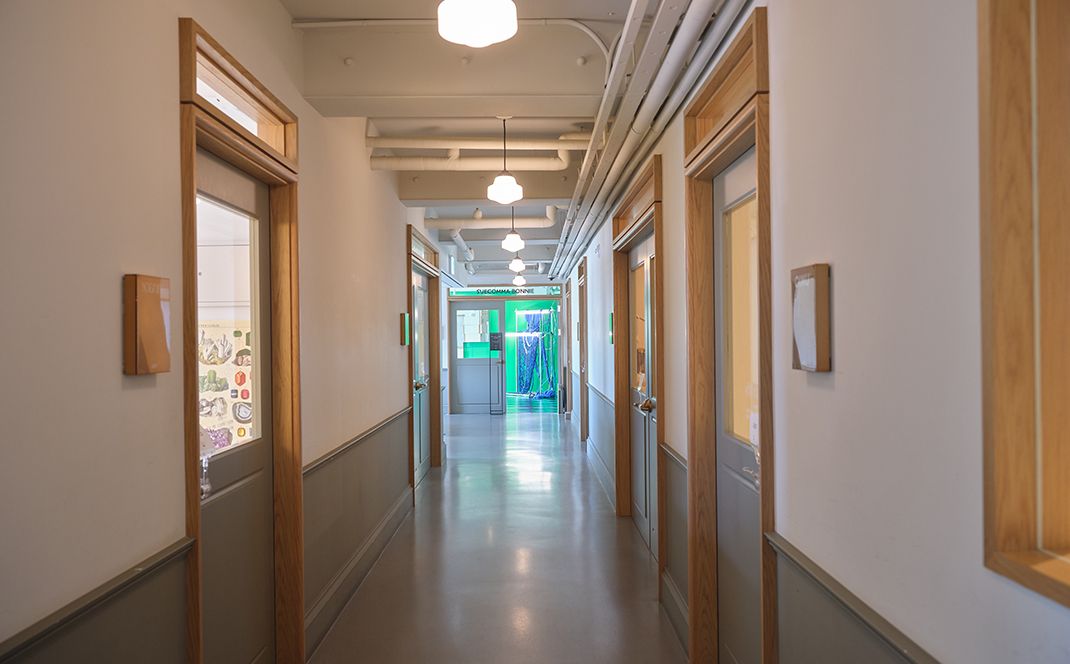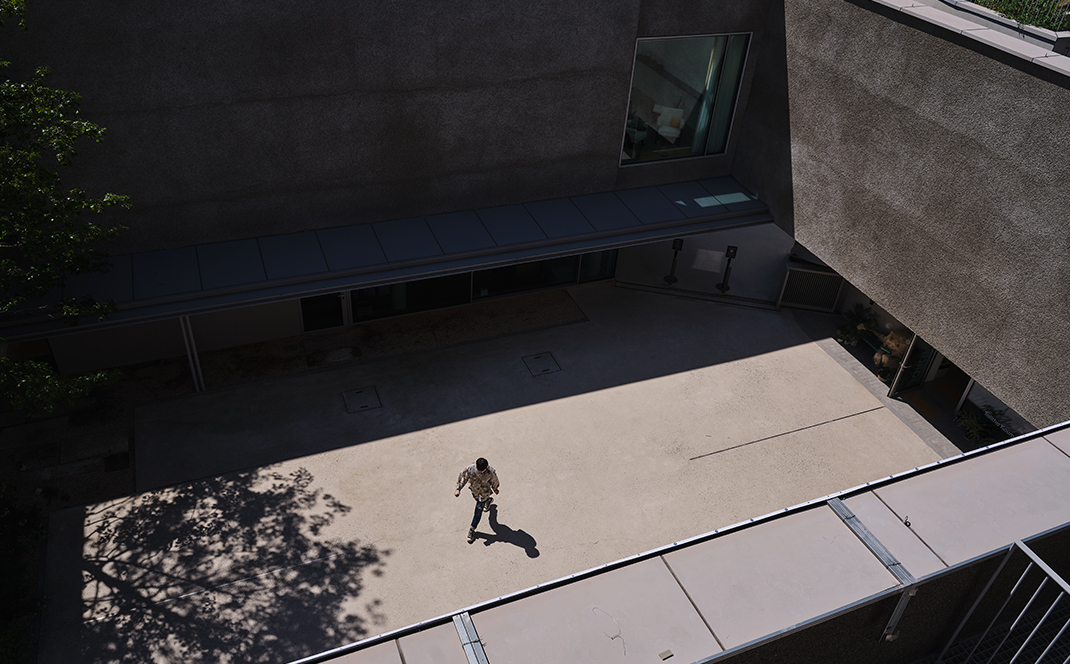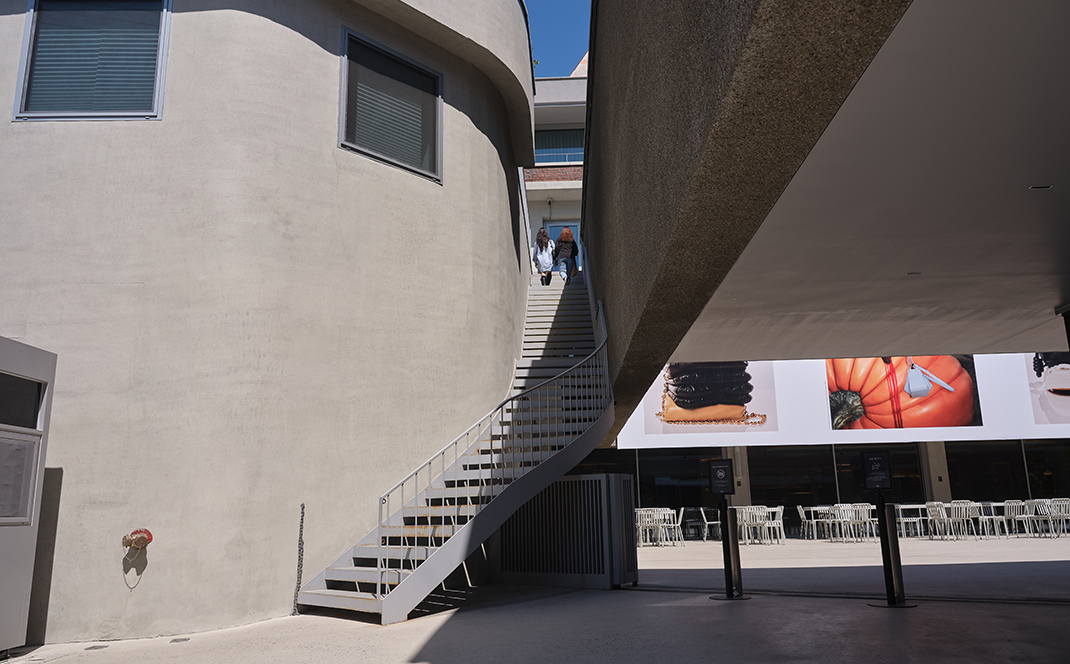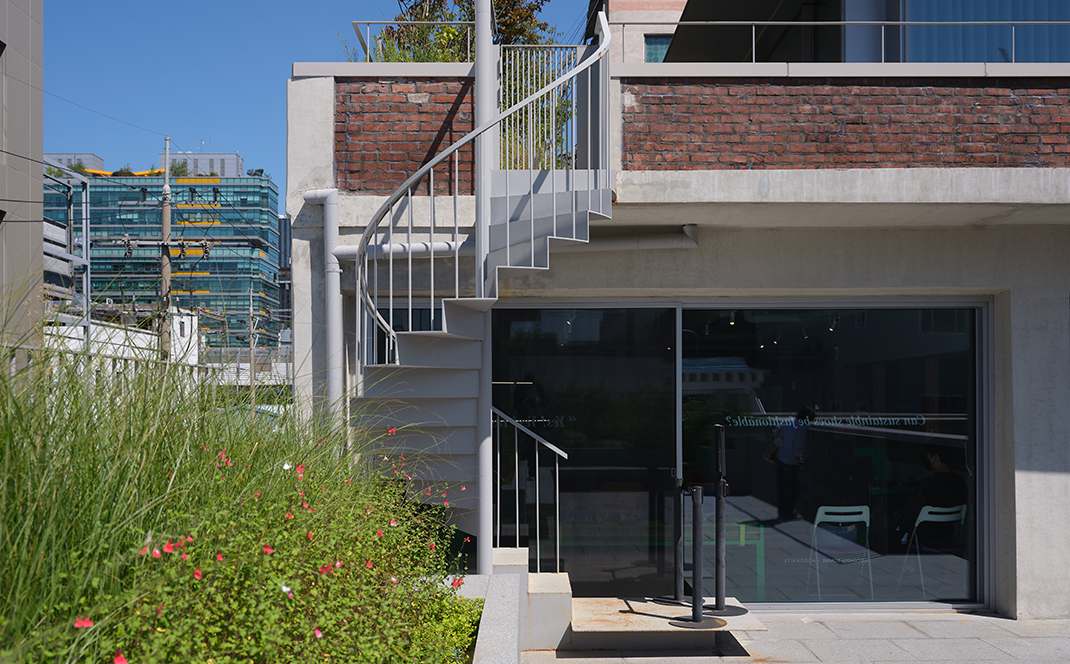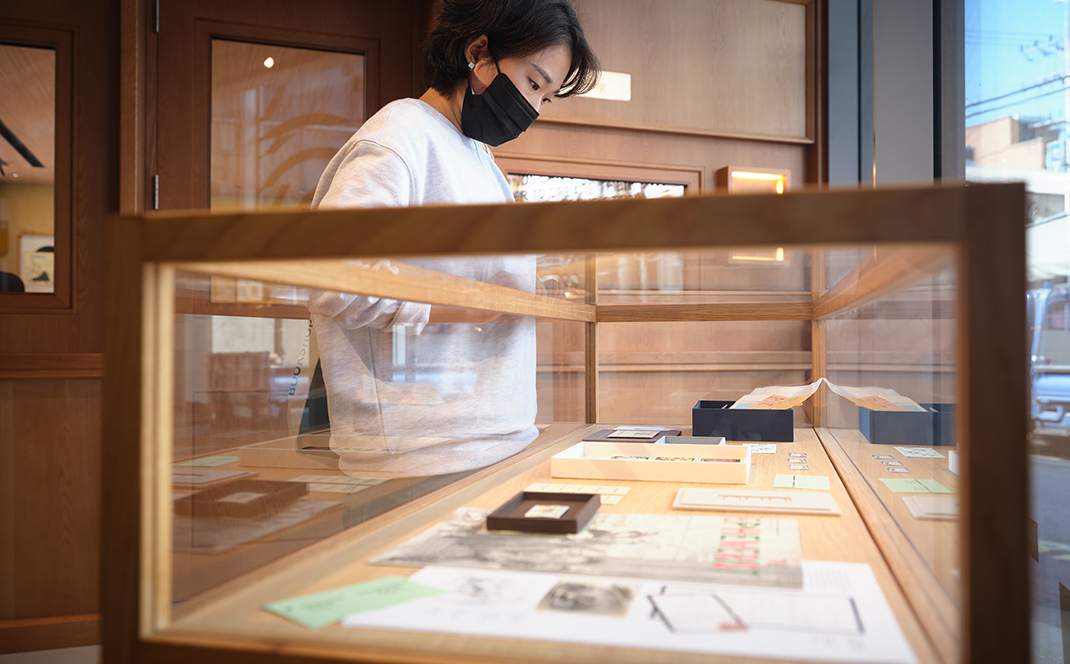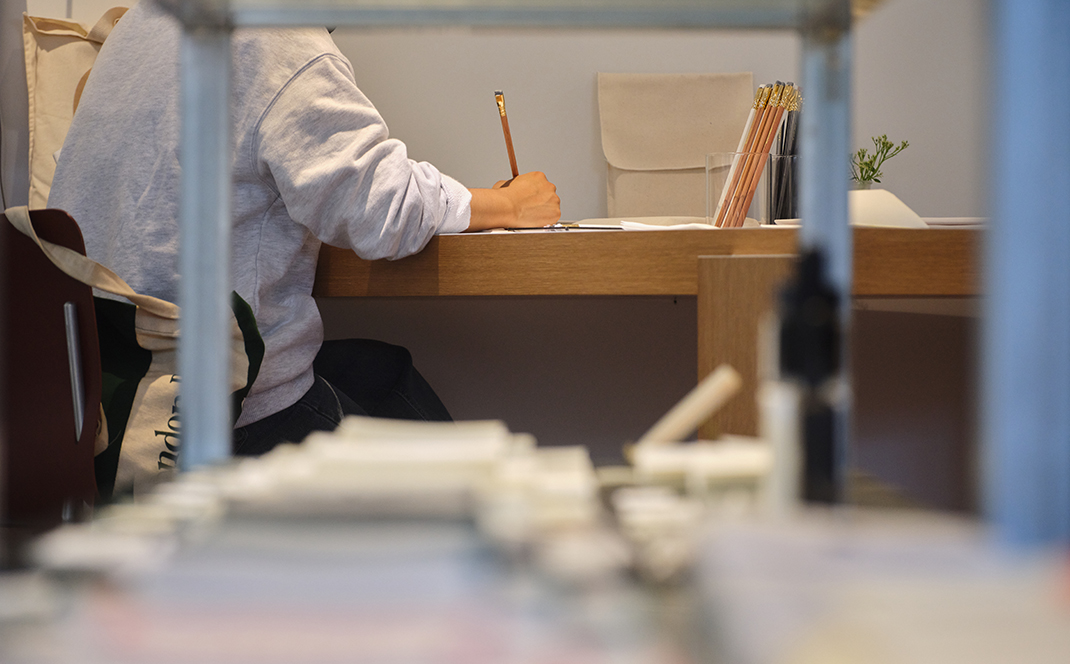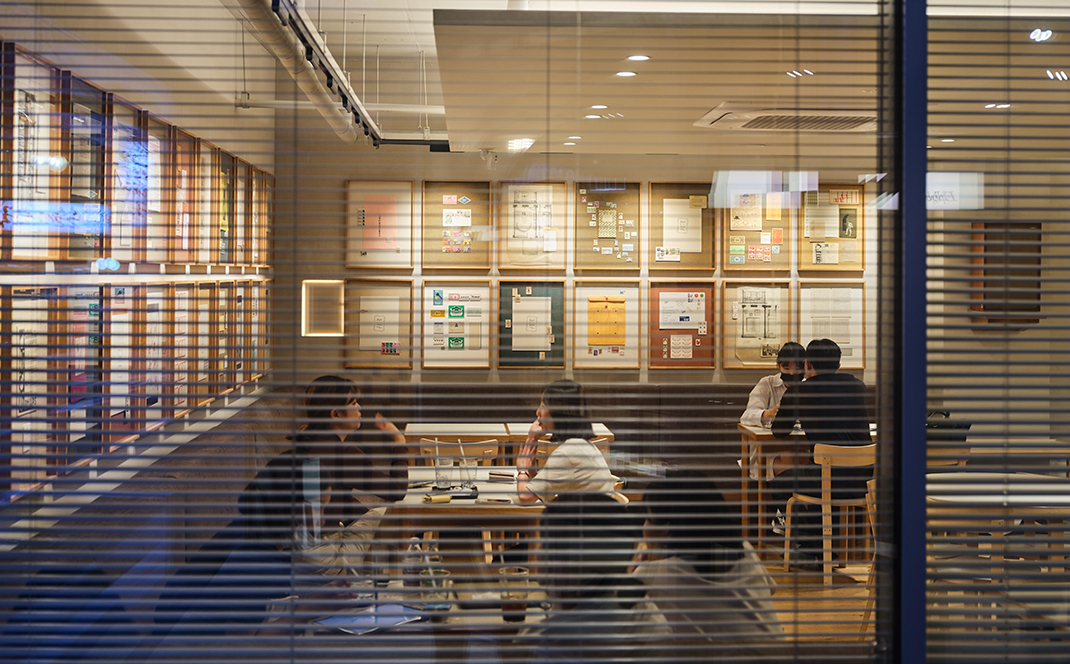A Space that Tells a Tale
A Disused Auto Repair Shop Weaves a
Rich Narrative as a Revived ‘Space Platform’
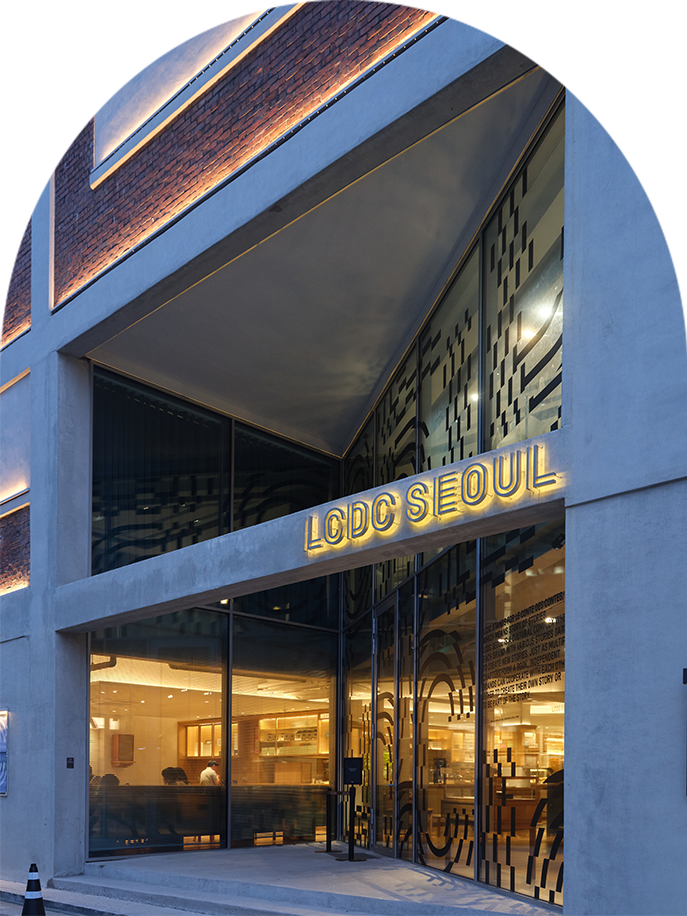
WRITTEN BY
Yu Pureum
Photographed by
Kim Byounggu
Often called the “Brooklyn of Seoul,” the hip Seongsu-dong neighborhood has plenty of old industrial spaces that have been turned into trendy cafes, bar shops and cultural spaces. Yet another old factory-turned-hot spot might not seem like a big deal. Nevertheless, the retail complex LCDC SEOUL stands out—despite its belated birth—thanks to its spectacular architectural transformation of a disused auto repair shop.
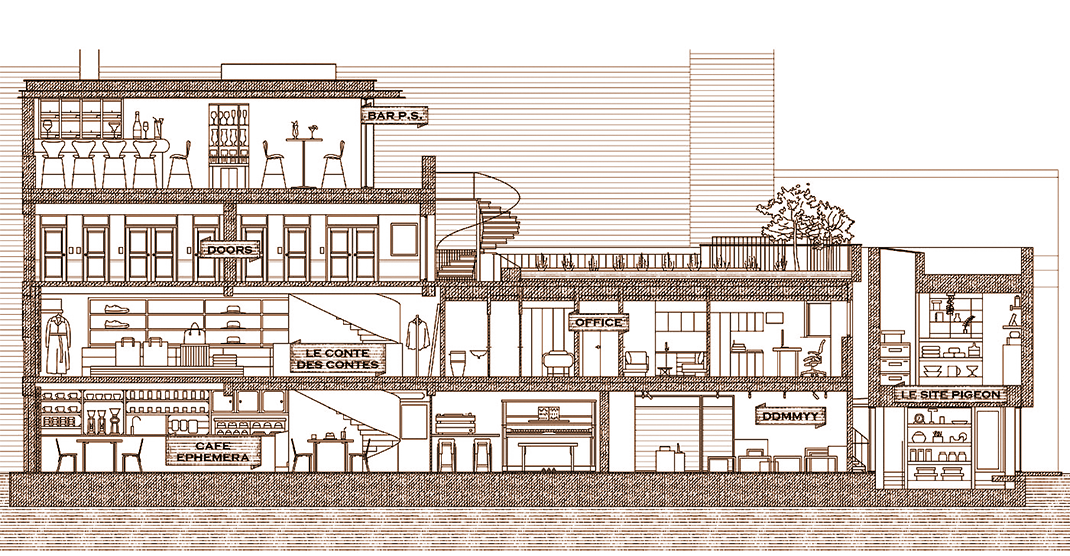
© SJ Group
Space Platform with a Story
LCDC stands for Le Conte Des Contes, meaning “a story within a story.” The name LCDC is the identity of this place. One massive story is created by numerous small and large brands, and visitors to this location are continuously adding to it. For this reason, LCDC SEOUL presents itself as a “space platform” that houses the brand’s narrative in three dimensions.
The concept of “a story within a story” permeates not only the interior of the building but also carried through the foundation of the building. LCDC SEOUL consists of buildings A and B, a renovated factory, and a new building, which is building C. Each of the buildings, especially buildings A and B that are exposed to the outside, appears to be a different building. But once inside, the courtyard that completely envelops buildings A, B, and C gives the three building a sense of unity. In other words, the courtyard allows for the three buildings to merge into a single story.
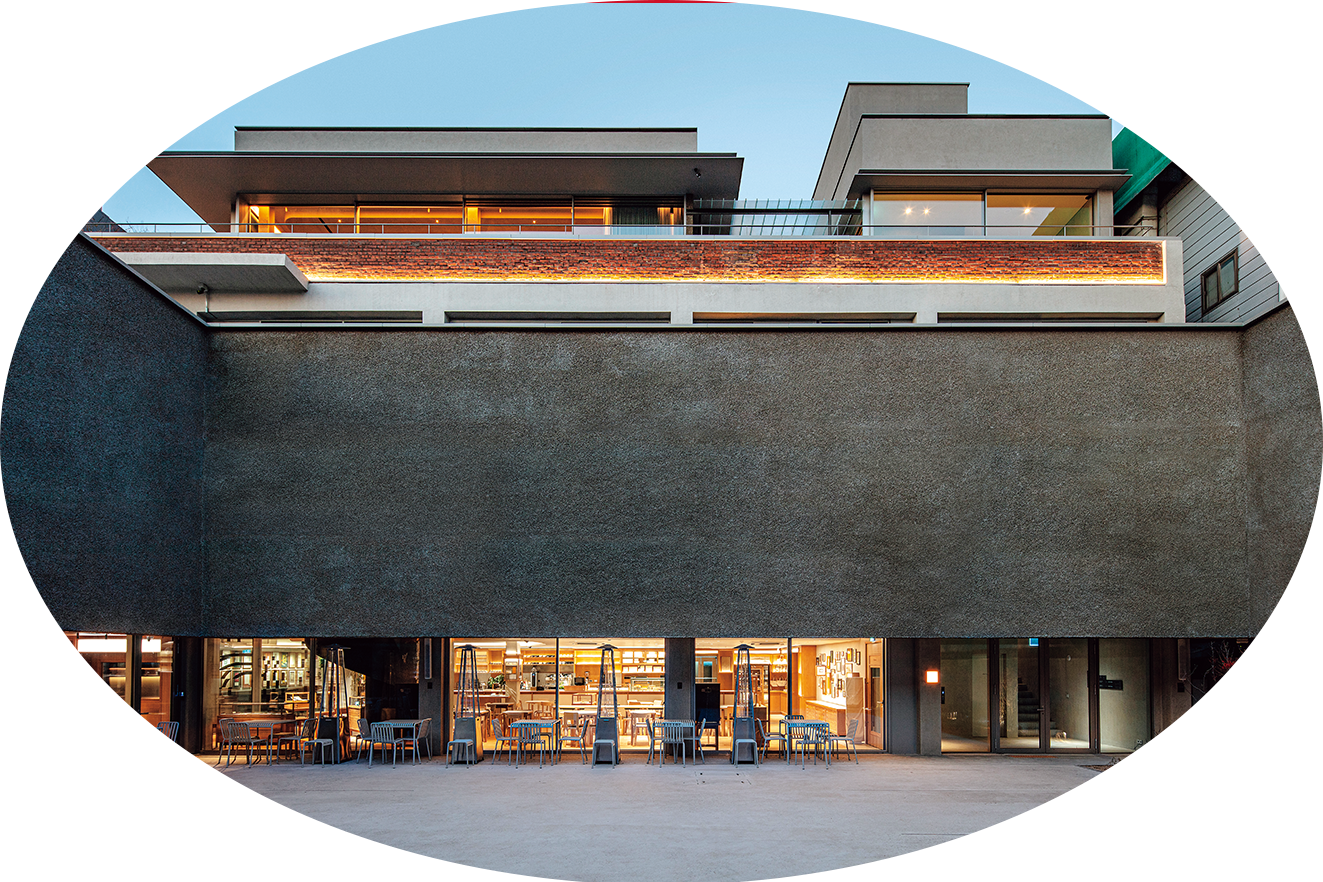
Maximizing the Benefits of Offline Space
Owing to its solid concept, LCDC SEOUL could succeed as a space platform and contribute to a change in consumer perception of the offline space. As more products have recently been available for purchase online, the status of offline stores has weakened. Contrary to expectations, this tendency has led to a rise in offline retail stores. This is due to the reality that while a consumer’s online space can be a site of consumption, it does not go far enough to qualify as a site for “experience.” As a result, many offline stores are looking for a way out by transforming into a space that offers experiences beyond simple product distribution.
LCDC SEOUL is the same. Individual shops are primarily congregated on the third level in a space named “Doors.” Six shops can be found on the third floor, including Geulwoll, which hopes to revive the dying handwritten letter culture through its pen pal service, and Hanahzo, which sells colorful handmade soaps.
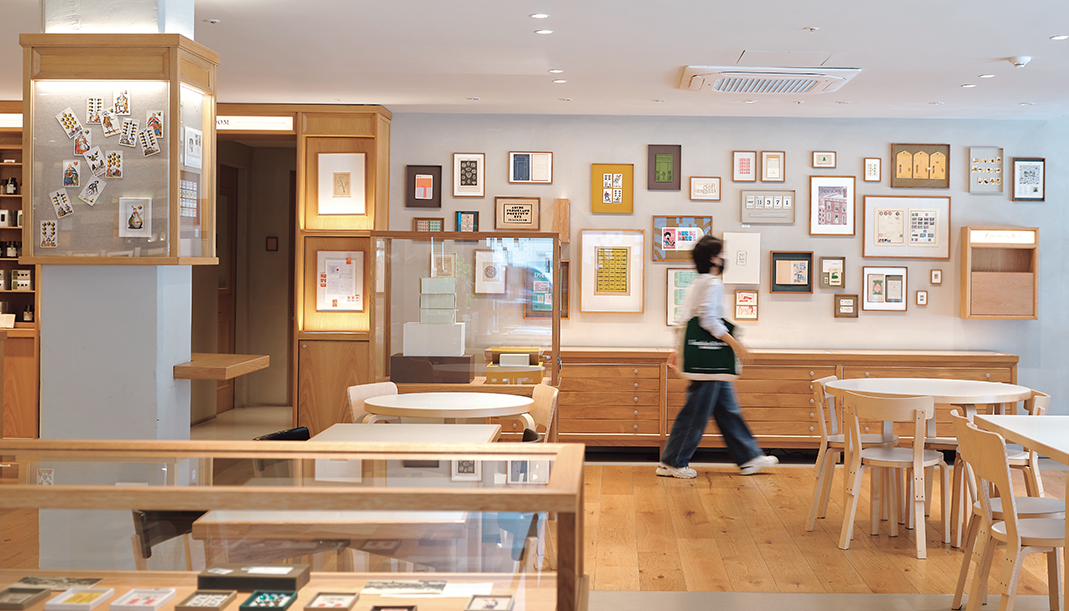
Ephemera, a cafe that showcases collectibles like tickets and postage stamps.
This space is not an open structure like a typical complex retail store. There are six doors along the hallway, and as the door opens, a new world unfolds in front of your eyes. In terms of design, it is an inefficient structure that wastes a lot of space, but this enables visitors to fully engage with the story of each brand in a private setting. It is a place optimized to attract the attention of the MZ generation, who value ties with brands. This context also applies to the pop-up stores on the first and third floors where new stories are continuously being penned. As such, the spaces of LCDC are all infused with the idea of “a story within a story.”
Numerous abandoned spaces will be refurbished into brand-new ones in the future. The success of this transformation ultimately hinges on the story that the space will hold in the future, not the remnants of the past, as LCDC SEOUL reminds us.
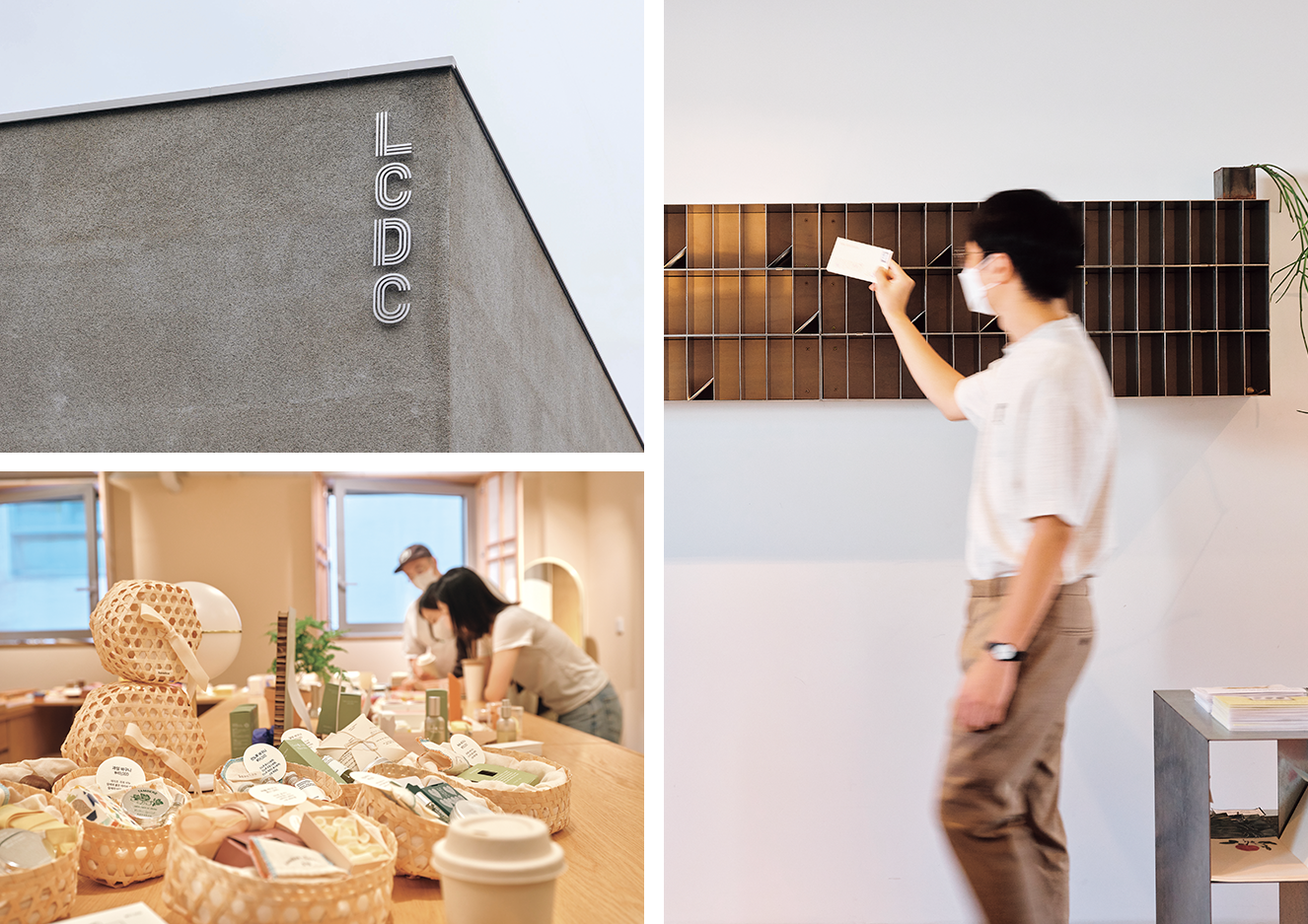
(Left top) The LCDC maximizes an advantage of offline space, 'experience.'. (Left bottom)Visitors are perusing Hanahzo’s offerings. (Right)Visitors using the pen pal service presented by Geulwoll.
Other Articles
-

Special Ⅰ A Factory of the Arts
-

Special Ⅱ A Space that Tells a Tale
-

Trend Old Factories, Young Blood
-
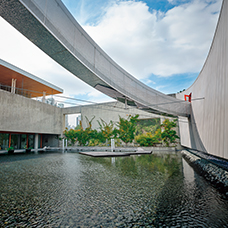
Hidden View Wired World
-

Interview Lee Heemoon
-
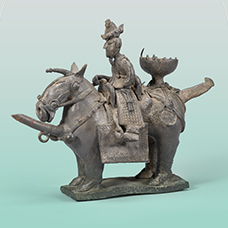
Art of Detail Fantastic Figurines
-

Film & TV Extraordinary Attorney Woo
-

Collaboration Countless Uses
-

Current Korea Solidarity at a Watershed Moment
-

Global Korea K-indie Music Night in New York

